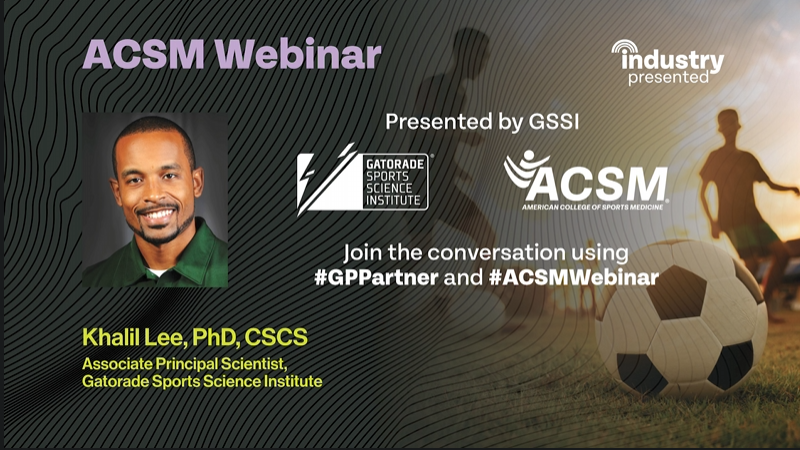|
Nov.
20, 2024
Miss the webinar?
Watch the recording here

Q: When trying to assess energy requirements how does peak height & peak weight velocity effect your estimation?
From our study, we found peak height velocity was not useful/effective for predicting RMR in adolescent athletes. Feel free to reference the Discussion section of the published manuscript for more info.
Q: Does the one compartment model apply to non-athlete youth at all? If not, do you have any suggestions for tools that would help estimate non-athlete youth caloric needs?
We unfortunately haven’t tested this in non-athlete youth. It’s important to note that resting metabolism is typically higher in athletes compared to non-athletes, as long-term effects of physical activity result in increases in RMR due to increases in lean muscle mass (Speakman & Selman, 2003). To my knowledge, the equation from the study by Lazzer et al. (2014) was developed for non-athlete adolescents. However, their study assessed only obese Caucasian youth and included stage of puberty as a factor for predicting RMR, which should be taken into consideration.
Q: What ages would you use your equation? 12-18?
The ages used in our study were 13-19 years. For practical applications, we recommend staying within this age range.
Q: About the recommendation of 0.25 g/kg BM protein intake: is that specific for adolescent athletes? Is that per day? Per hour of exercise? Can you please repeat?
The 0.25-0.30 g/kg protein recommendation applies to athletes of all ages (not just adolescents) and is specific to protein intake immediately following exercise (e.g. consuming a protein shake after a workout/training session).
Q: Are the RMR equations you provided for both adolescence and adults or only adolescence?
The equations developed from our study are specific only to adolescent athletes.
Q: You discussed gender in your equation for REE, is there any race-based breakdown that would differ?
Great question! From our analysis, we didn’t find race/ethnicity to be a significant predictor of REE. However, one of the limitations of the study was that we had a small representation of non-White/European Americans. That said, we cannot eliminate the possibility that race/ethnicity could have an effect. Further research is needed to determine this.
Q: Is there a method for estimating RMR during the peak height velocity ages (13-14 for boys and 11-12 for girls)? Is this likely to be higher or lower relative to weight than for 16 year olds?
The equation developed from our study is suitable for adolescents as young as 13, which falls within the average range of peak height velocity (particularly for boys). As for estimating RMR for a given body weight, it’s important to note that height (in cm) is also factored into the equation and can therefore impact the estimated value. To collect a more precise RMR measurement, an indirect calorimetry assessment is recommended.
Q: Thoughts on creatine in youth athletes?
While research on creatine use in youth athletes is currently limited, there’s some emerging evidence that create supplementation could be safe/beneficial for adolescent athletes involved in serious/competitive training if used with proper precautions/supervisions (e.g. not exceeding recommended dosages, etc.). The review article by Jagim and Kerksick (2021) contains more info on this topic.
Q: How do these guidelines change when looking at non-team sports that are endurance-related like running? Which are the most important to focus on?
The nutrition guidelines covered in the presentation are also applicable for endurance athletes, with the exception of carbohydrate recommendations during training/competition. For endurance events lasting 3 hours or more, athletes may consume up to 90 grams of carbs per hour of exercise (compared to 30-60 grams/hour for team sport athletes) (Thomas et al., 2016).
Q: Hi there, I'm Pippa Woolven, founder of Project RED-S and I have really enjoyed your webinar, thank you. Can I ask, if someone carries out an extra hard workout or intense competition, is their metabolism spiked for an additional time period and are their any nutritional recommendations to maximize recovery?
There’s evidence (including studies by LaForgia et al., 2006, and Knab et al., 2011) in support of vigorous exercise causing increases in metabolic rate post-exercise. The amount (and time extent) of the increase will depend on certain factors, including the length and intensity of the exercise completed. Consuming adequate amounts of carbohydrate, protein, and fluids (as covered during the presentation) will be key to help maximize recovery between exercise bouts.
Q: What were the sports of the athletes in the article?
The sports included in our study were baseball, basketball, American football, golf, track & field, tennis, soccer, and lacrosse.
Q: How important is replenishing sodium for athletes? I've noticed a lot of my athletes I train feel better when using more electrolytes, especially sodium.
Replenishing electrolytes (especially sodium) during and after activity is very important for athletes. Sodium is the primary electrolyte lost in sweat, and it plays a key role in the rehydration process as it helps maintain the balance of fluids inside and outside of cells in the body.